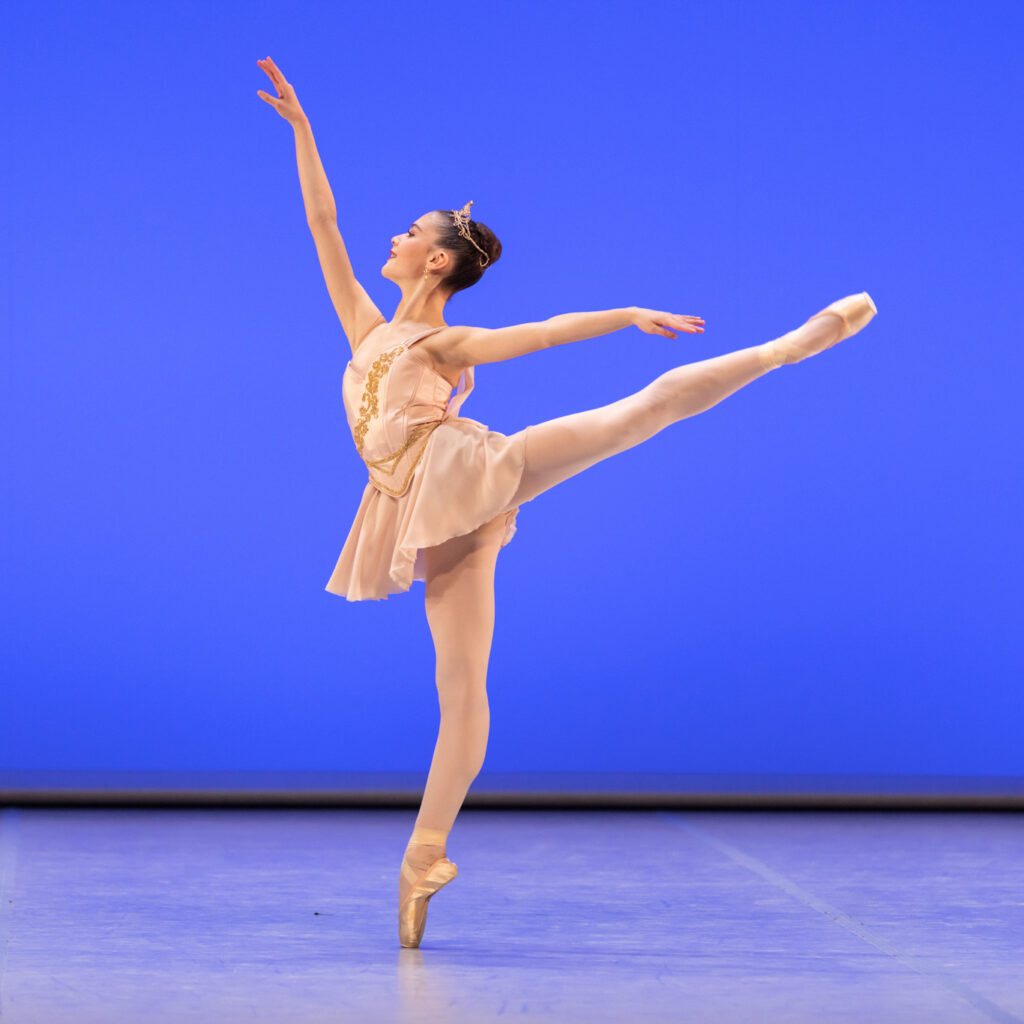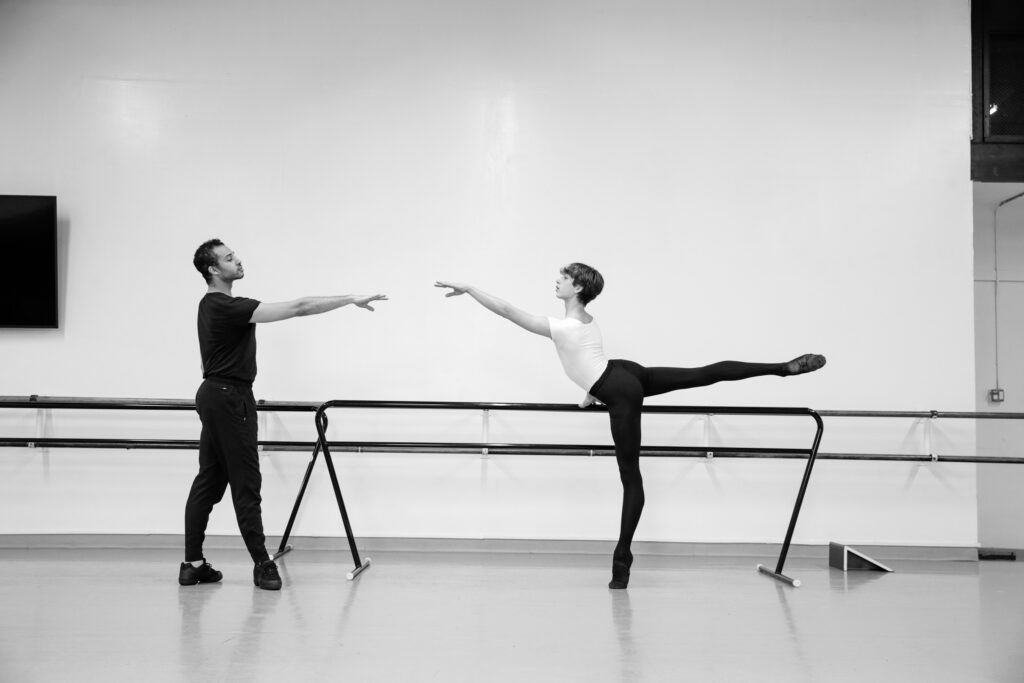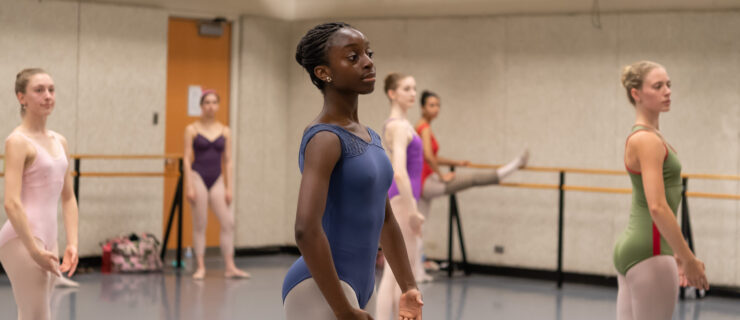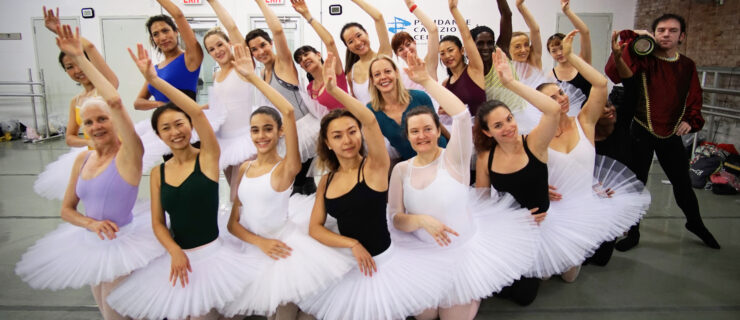In Need of Financial Aid? Here Are Tips for Funding Your Summer Intensive
Summer intensives are an undeniably important aspect of a dancer’s training. They provide opportunities for young artists to connect with industry professionals, bolster their technique, and they can even be a gateway to securing a job with a company later on. However, many of these programs also come with a hefty price tag.

Alecsia Lazarescu says that, without funding help, it would have been challenging to afford the training she’s received. A native of Romania, Lazarescu currently trains at the Royal Ballet School and has also studied at Ballet Theatre Basel and a variety of summer programs. She’s been the recipient of financial prizes, like Youth America Grand Prix’s Hope Award and Prix de Lausanne’s Bourse Jeune Espoir award, and has also received funding through the Angel Shine Foundation and some Romanian organizations.
“It was impactful to have different sources of financial support coming my way, because there’s things that my family couldn’t have done without all this help,” she says.
Lazarescu’s need for financial assistance is not unique. In ballet—and dance as a whole—scholarships and financial aid are necessities for many students.
“There’s a huge need, because it’s not only the tuition fee. It could be travel, it could be food. If it’s a dance artist or student coming from out of the country, it could be their visa,” explains Kellee Edusei, the executive director of Dance/USA.
There are many approaches to funding your summer intensive, whether it’s through financial aid offered by the school, an independent scholarship, individual fundraising, or anything in between. Pointe spoke with Lazarescu, Edusei, and others to get the details on the summer intensive funding process.
Ask Programs About Financial Aid
The first step to funding your summer program is approaching the school itself about scholarship opportunities and need-based financial aid. Stephanie Prosenjak, the owner and artistic director of Cherry Creek Dance in Denver, Colorado, helps her students by first having an honest conversation about their financial needs. Then, she encourages them to email the appropriate party at their program of choice to get answers to any remaining questions.
“[I start by] just having them write down the questions, maybe sending a general email to see if they get any feedback, and doing a follow-up,” she says. “If you don’t get a response, follow up again two or three times until you can get a hold of someone.”
Sharon Story, dean of the Centre for Dance Education at Atlanta Ballet, recommends starting this process by doing some research. Information about a program’s financial aid application requirements and deadlines is usually on their website, as well as information about merit-based scholarships. (Many schools list a specific contact for summer intensive-related questions.)
“We really try to pay attention to the financial need scholarships, and we really look at what their needs are and try to meet them,” Story says.

Edusei also recommends looking into whether your intensive of choice offers a work–study program, which allows dancers to do jobs helping with fundraising, admin, or other work in exchange for free or discounted tuition.
Competitions are another way to earn scholarships for summer programs, but participating in and traveling to these events often come at a cost, too.
Schools might have systems in place to help students with nontuition–related expenses, as well. Prosenjak says that some dancers at her studio have been able to stay with school-affiliated host families during their summer intensives to mediate or eliminate room-and-board costs. Story explains that, at Atlanta Ballet’s summer intensive, a select group of scholarship students—usually those who are traveling from outside the country—may have the option to stay in second company housing that is vacant during the summer.
Find Independent Dance Scholarships
In addition to aid that might be available through your preferred summer program, independent dance-related scholarships can help cover, in full or in part, the cost of tuition, housing, food, and other summer-intensive–related expenses. “A lot of these grants don’t necessarily have to be allocated to tuition or board, they just go towards the student in their process of training,” explains Adrian Blake Mitchell, the associate executive director of the Westside School of Ballet.
For example, Brown Girls Do Ballet’s Summer Intensive Scholarship is open to female dancers of color ages 9–18 and is intended to help cover additional expenses, including pointe shoes, leotards, and travel. National Dance Education Organization (NDEO)’s National Honor Society for Dance Arts Award can be applied broadly toward tuition, living expenses, or dance education opportunities. And competition awards offered through YoungArts provide unrestricted cash prizes of up to $10,000. Be sure to plan in advance for these opportunities, making note of when scholarship applications are due.

When searching for independent scholarships, it may be helpful to start by seeking out opportunities in your local area. “It’ll be easier to receive a scholarship from something that is local, within your community, because there is a smaller pool of people they’re looking at, and your connection to the community might help,” Mitchell says.
For dancers based in the Los Angeles area, he points towards The Music Center’s Spotlight Awards, which offer cash prizes to competition award winners. The Dance Council of North Texas is another regional option, offering funds to help students attend summer study programs away from home.
Story has also seen students seek scholarships through Regional Dance America, a nationwide organization that partners with regional pre-professional dance companies to provide a variety of resources, including scholarships to schools and summer programs.
And, in addition to your geographical community, be sure to leverage the connections you have made in the wider dance world, too. For example, Lazarescu became connected with the Angel Shine Foundation through Larissa Saveliev, the founder and artistic director of Youth America Grand Prix.
Create Your Own Funding Opportunities
In addition to formal scholarships, grants, awards, and financial aid, you can also consider looking for income opportunities to save money, such as assistant teaching at your studio or getting a part-time job on the weekends that doesn’t interfere with your dance schedule.
Dancers can also organize their own funding options. To do this, it can be helpful to take a similar community-based approach, utilizing both your geographical connections and reaching out to individuals within the dance industry that you may already know.
Prosenjak says that the dancers at her studio have had success joining forces to coordinate a bake sale, car wash, or similar event. She adds that, while these methods can be effective, it’s important to plan well in advance to avoid last-minute stress.
“We talk about what intensives or camps they want to go to, get a price for it, and then talk about different ways they can fundraise throughout the year,” she explains.
Another popular option is creating a crowdsourcing campaign. When Mitchell was funding his training at Russia’s Vaganova Academy, he started a GoFundMe page. After Misty Copeland reshared his campaign, he received an additional several thousand dollars’ worth of funding to put towards his studies.
“If you are creative,” he says, “there are a lot of opportunities to find funding to make it work in some way.”






